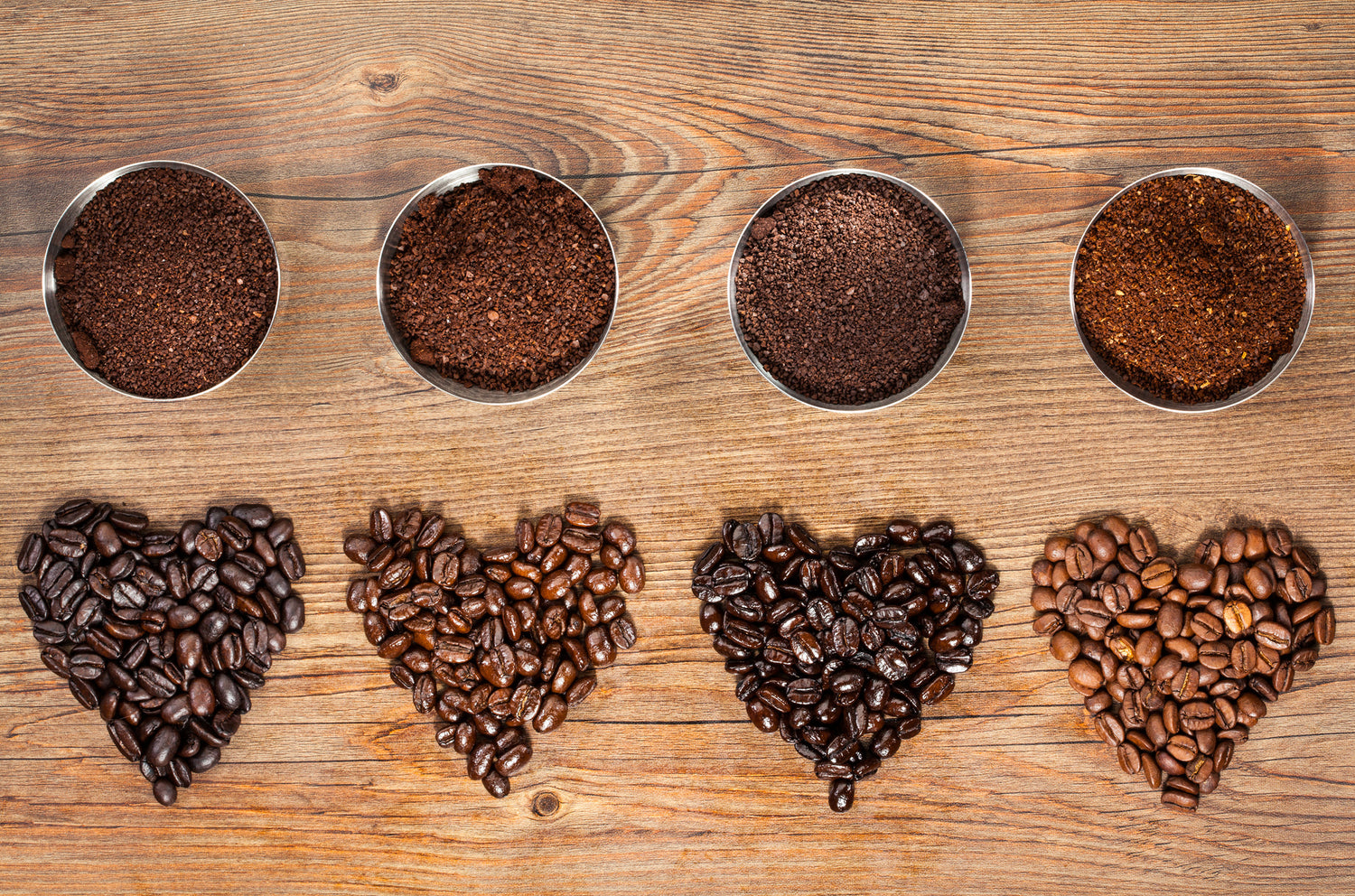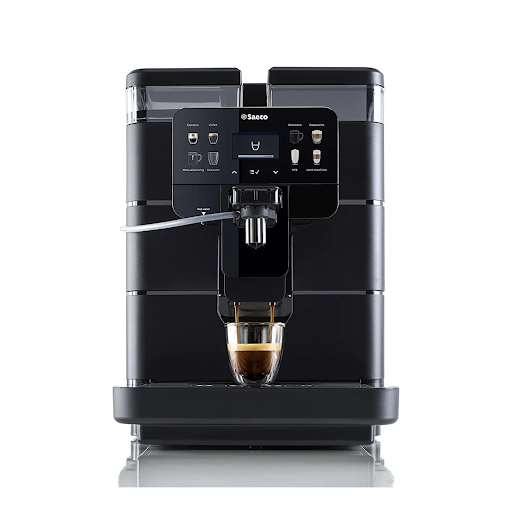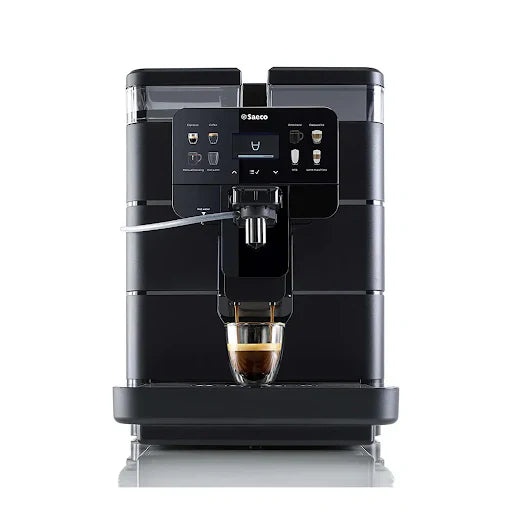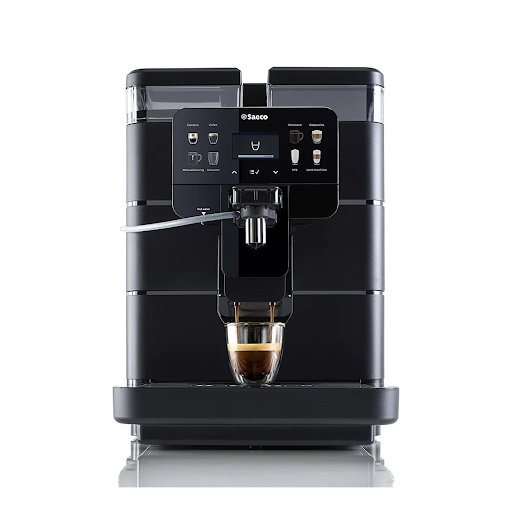Coffee Roasts Guide: A Perfect Espresso- Everything You Need to Know

It is really futile to fight over which coffee machines might make the best cup if you don't stop and consider what coffee you are using in that machine. In order to make the right choice in coffee, you need to really be clear about the coffee roast you need for the coffee brewing method you will ultimately be using.
If you want to brew an espresso for example, the coffee roast is the single most important variable in the flavor, aroma, body and ultimately taste of the coffee in your cup.
Most coffee drinkers need a coffee roasts guide to understand how beans go from soft and spongy on a branch to what ends up in your cup. Understanding the basics of coffee roasts will help you make the right choice for the brewing method you will use.
What's in a name?
Previously, a particular roast was identified by a geographic area associated with the it, for example, Italian, French ,City or New England. Because a geographic area was, in many instances, associated with a very specific brewing style, and the name given to the coffee roasts aligned themselves with the brewing method of that locality. For example, you could surmise that an "Italian roast" was developed to make espresso - the popular Italian brewing method.
However, over time and as our coffee cultures combine, terminology associated with coffee roasts has really become skewed. Add the fact that marketers are looking to use language to attract consumers by using seductive adjectives and language, and it is increasingly difficult to really know what kind of coffee roast is in the bag.
Choosing Beans for a Perfect Espresso
Now you have taken the time to research machines and you have found the perfect one. The next step is to know how to make the perfect espresso. There are three things to consider in order to achieve the perfect espresso: the bean, the roast and the brew.
Before we go any further, it is important to clarify that there is no such thing as an espresso bean. Espresso refers to the brewing method. There are only coffee beans.
What distinguishes coffee beans is their roast. Coffee beans roasts can range from light to dark. Beans that are roasted in the medium to medium- dark range are those that are most suited to making espresso.

Consider the Origin of the Coffee Bean
Like any chef, starting with high quality ingredients will always result in a superior dish. Chefs also want to know where their produce came from This is also true for coffee. Where the bean comes from: country, climate, and altitude all play an important role in the final product and taste.
You also should know there are two general types of beans: arabica and robusta. Each has an important role in coffee taste. Robusta grows in lower elevations and are noteworthy for their caffeine and rough notes in flavor. The high density of oils in Robusta is also what contributes to crema of an espresso.
The Arabica species on the other hand, grow in higher elevations. Much more Arabica is available than Robusta but only 1 or 2 percent of the word's Arabica production is the superior quality that provides the flavors and aromas that espresso drinkers expect.
The characteristics that beans from various parts of the world contribute to a coffee along with the contributions of both Robusta and Arabica are the elements that contribute to the final rich complex taste of espresso.
While single origin roasts are fantastic for certain brewing methods the richness of an espresso is achieved when you blend bean varieties. For this reason roasts ideal for espresso are blends or "miscela" as the Italians say. This Italian barista explains it well.
Consider the roast of the Coffee Bean
Did you know that coffee beans start off green? Fresh coffee beans are green, moist and have an earthy scent. It's the roasting process that gives them their dark color and flavor.
Through the process of roasting, coffee beans become those crunchy little beans whose aroma ,when brewed, get us out of bed in the morning. Before you can begin to properly determine which flavor profile you like you need to arm yourself with the basic knowledge of coffee roasts and how they affect the final taste in your cup.
This coffee roasts guide is a great place to start.
Light Roasts
The color of beans can tell you a lot about their roast level. Lighter roasts are heated for a shorter period of time than darker roasts. They end up appearing the palest shade of brown out of all roasts.
Coffee beans begin to reach their final roasted form around 350°F - 400°F. This is called "first crack", indicating when the moisture being extracted from beans is signaled by its first bits of cracking. Light roasts are not usually heated past those first cracks.
They'll be the driest beans with little to no oil visible on the surface of the beans. They have an earthier flavor. Because the roasting process cooks away the caffeine, light roasts have the most powerful punch in that department.
Lighter roasted beans are also the most acidic. In the coffee world, acidity does not refer to the PH balance nor to what is perceived as "sour" taste like lemon. Rather acidity is how close the bean is to it's natural green or fruity state. The more a bean is roasted the further away it is from it's "natural" state therefore it loses it's acidity.
While any roast can be used in any brewing method, using a light roast to make an espresso will produce a disappointing result. An expresso made with a light roast will produce a coffee that is flat and lack the richness and velvety finish associated with espresso.
Medium Roasts
Beans that are considered "medium roasts" are heated to 410°F - 430°F. After the first series of cracks, medium roasts are heated until they reach the "second crack".
They tend to be a little bit darker brown. The flavor and color of the coffee will be a little more full than lighter roasts.
The beans still won't have any oil visible on their surface but the flavor will be slightly less acidic than lighter roasts. They'll have a more balanced taste and contain slightly less caffeine than their lighter counterparts.
Medium roast is an appropriate roast to begin to experiment with in pursuit of your perfect espresso.
Medium-Dark Roasts
Beans that are roasted a little longer than the "second crack" will show a rich, dark color with some amount of oil visible on the surface. Roasting temperature is about 25°F higher than medium roasts.
These beans have a roast period that ranges from the beginning of the second crack to the middle of the second crack.
When roasting medium-dark roasts, the aromas of the beans will be extremely indicative of the flavor. Flavors can range from bittersweet to spicy, chocolatey or caramel depending on the age of the beans and their origin.
Medium-Dark roasts will develop in body. Body is used to describe the physical properties of the beverage and is associated with sensations of fulness, roundness, richness and denseness.
Italian baristas insist that medium or medium dark roasts are perfect for making espresso.
Dark Roasts
Dark roasted beans have an oily and shiny exterior. They'll be dark to almost black in color. These beans are heated at the highest range, more than 100°F higher than light roasts. They will be roasted to the end of the second crack or longer.
Their flavors can be smokier, fuller, almost burnt. Dark roasted blends should only be used in french presses and more standard coffee brewing methods if you're a real coffee aficionado. To most people, the flavor is too intense.
Check out this video to better understand coffee roasting process.
How Coffee Roasts can Impact your Espresso Machine
Keep in mind that the roast of beans you choose not only influences the taste of your coffee but it can impact your machine. Overly roasted beans are oily and leave a greasy residue on all your machine components like the bean hopper and brew unit. Overtime this oily residue will become sticky and gummy which can cause damage. If you have been using overly roasted or oily beans or really dark roasts, be sure to clean components to ensure your machine will produce an excellent espresso. You should also consider if the roast you are using is really too dark.

Having a guide to explain what coffee roasts are supposed to taste like is nothing compared to the experience of tasting the coffee yourself. Whether you're a daily coffee drinker or you just casually enjoy an espresso, knowing what kind of beans you're getting is empowering.
You should know what to expect when you order a cup of coffee. Higher end coffee shops will now ask whether you want their light roast or dark roast. Understanding coffee roasts is the starting point to developing your personal coffee preferences.
Once you learn about coffee roasts, you can begin to explore various brewing methods. The trick is finding the roast that suits the brewing method. When you find the perfect match, it is truly a match made in heaven, you will experience the magic and satisfaction of a delicious cup of coffee or espresso.
Now that you've read our coffee roasts guide, contact us if you want to get a handle on the tools for making the perfect cup of espresso.








Coffee grinds are edible but is there a noticeable difference in how much more caffeine you will feel when eating light-roasted coffee beans or darker-roasted beans?
(don’t worry, I am mixing the beans with other ingredients, not just eating them raw)